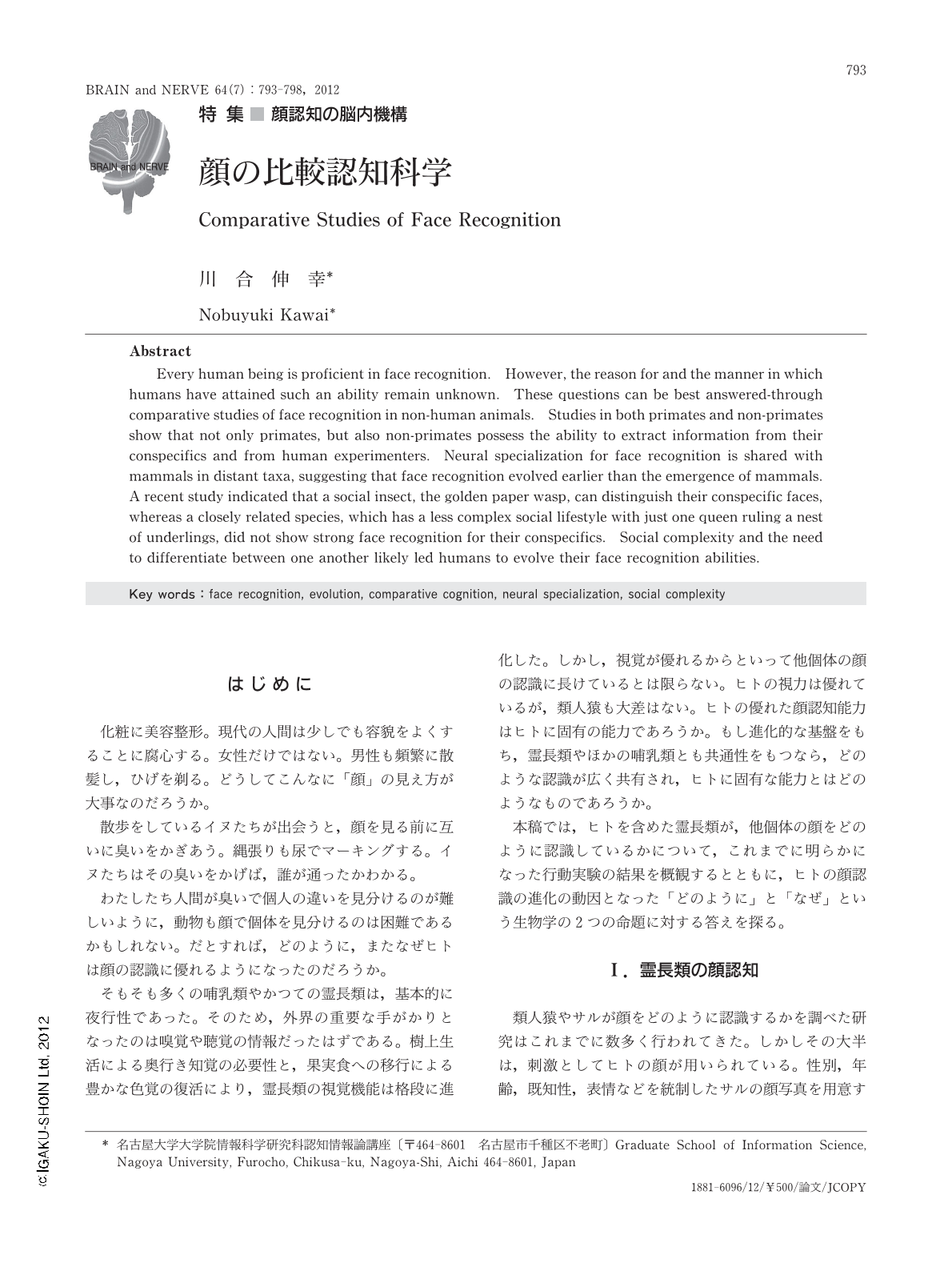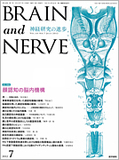Japanese
English
- 有料閲覧
- Abstract 文献概要
- 1ページ目 Look Inside
- 参考文献 Reference
はじめに
化粧に美容整形。現代の人間は少しでも容貌をよくすることに腐心する。女性だけではない。男性も頻繁に散髪し,ひげを剃る。どうしてこんなに「顔」の見え方が大事なのだろうか。
散歩をしているイヌたちが出会うと,顔を見る前に互いに臭いをかぎあう。縄張りも尿でマーキングする。イヌたちはその臭いをかげば,誰が通ったかわかる。
わたしたち人間が臭いで個人の違いを見分けるのが難しいように,動物も顔で個体を見分けるのは困難であるかもしれない。だとすれば,どのように,またなぜヒトは顔の認識に優れるようになったのだろうか。
そもそも多くの哺乳類やかつての霊長類は,基本的に夜行性であった。そのため,外界の重要な手がかりとなったのは嗅覚や聴覚の情報だったはずである。樹上生活による奥行き知覚の必要性と,果実食への移行による豊かな色覚の復活により,霊長類の視覚機能は格段に進化した。しかし,視覚が優れるからといって他個体の顔の認識に長けているとは限らない。ヒトの視力は優れているが,類人猿も大差はない。ヒトの優れた顔認知能力はヒトに固有の能力であろうか。もし進化的な基盤をもち,霊長類やほかの哺乳類とも共通性をもつなら,どのような認識が広く共有され,ヒトに固有な能力とはどのようなものであろうか。
本稿では,ヒトを含めた霊長類が,他個体の顔をどのように認識しているかについて,これまでに明らかになった行動実験の結果を概観するとともに,ヒトの顔認識の進化の動因となった「どのように」と「なぜ」という生物学の2つの命題に対する答えを探る。
Abstract
Every human being is proficient in face recognition. However,the reason for and the manner in which humans have attained such an ability remain unknown. These questions can be best answered-through comparative studies of face recognition in non-human animals. Studies in both primates and non-primates show that not only primates,but also non-primates possess the ability to extract information from their conspecifics and from human experimenters. Neural specialization for face recognition is shared with mammals in distant taxa,suggesting that face recognition evolved earlier than the emergence of mammals. A recent study indicated that a social insect,the golden paper wasp,can distinguish their conspecific faces,whereas a closely related species,which has a less complex social lifestyle with just one queen ruling a nest of underlings,did not show strong face recognition for their conspecifics. Social complexity and the need to differentiate between one another likely led humans to evolve their face recognition abilities.

Copyright © 2012, Igaku-Shoin Ltd. All rights reserved.


